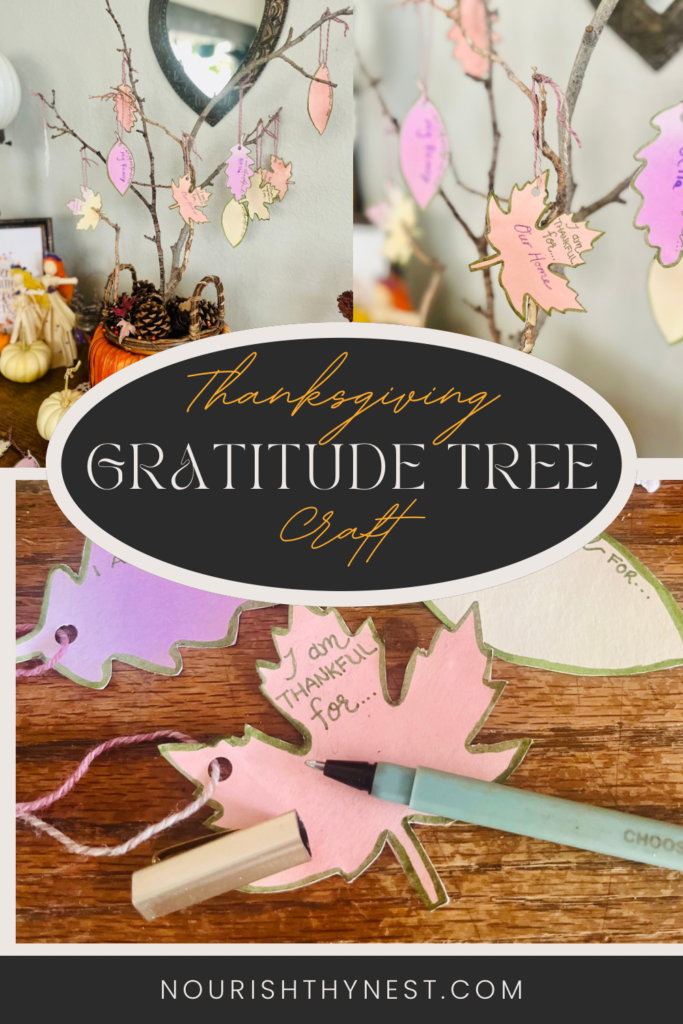
**This blog is reader supported, and some of the links in this post are affiliate links, meaning, at no additional cost to you, I will earn a commission if you click through and make a purchase. As an Amazon Associate I earn from qualifying purchases**
Thanksgiving is such a beautiful season—a time to gather, reflect, and cherish the blessings in our lives. It’s also the perfect opportunity to teach our children the importance of gratitude. By cultivating a spirit of thankfulness in their hearts, we’re giving them a gift that lasts far beyond the holiday season. Let’s explore some meaningful, simple ways to guide your children in practicing gratitude, and why it’s such an essential part of growing up.
Why Gratitude Matters
Gratitude isn’t just about saying “thank you.” It’s a way of seeing the world—appreciating the big things, like family and love, and the little things, like the way sunlight streams through the window or the smell of cookies baking in the oven.
When we help our children focus on what they have rather than what they lack, they grow into more empathetic, resilient, and joyful individuals.
How to Nurture Gratitude in Your Children:
1. Show Them the Way
Children watch everything we do, so let’s model what gratitude looks like in everyday life. Share your own moments of thankfulness—whether it’s a kind word from a friend, the warmth of a cozy home, or a perfectly brewed cup of tea. Saying these things aloud not only helps you stay mindful but also shows your children that gratitude is everywhere, even in the simplest moments.
2. Start a Gratitude Journal Together
Consider creating a family gratitude journal. Each evening, gather around the table or cuddle up on the couch and invite everyone to share one thing they’re thankful for. Write it down together. This daily practice creates such a lovely rhythm and helps your children focus on the good in their lives, no matter how small.
3. Celebrate Small Acts of Kindness
Gratitude and kindness go hand in hand. Whenever your child shows thoughtfulness—whether it’s helping a sibling, sharing a toy, or comforting a friend—take a moment to acknowledge it. Let them know how much their actions mean. This encourages them to connect their kindness to the joy it brings others..
4. Create a Gratitude Tree
Crafting a gratitude tree is a wonderful activity to involve the whole family. Gather some twigs and place them in a sturdy vase or pot. Cut out leaf shapes from colorful paper, and invite your children to write down what they’re thankful for. As the tree fills with gratitude leaves, it becomes a beautiful reminder of all the blessings in your home. (Detailed instructions for this craft below!)
5. Give Back Together
One of the most profound ways to teach gratitude is by helping others. Volunteer as a family—whether it’s delivering meals, donating toys, or making cards for neighbors.
For example, our family organizes a Holiday gift drive to benefit Indigenous children and youth living on reservations in South Dakota each year, where holiday gifts are distributed and a community meal is shared at Winter Solstice gatherings in those communities.
These moments teach children how powerful giving can be and help them appreciate all that they have.
6. Share Stories of Thanksgiving
Take time to sit down with your children and share the meaning behind Thanksgiving. You can weave in stories of harvest time and feasts of Thanksgiving throughout history in different cultures, and discuss why it’s important to pause and give thanks. Use this time together to reflect on the people, experiences, and memories that fill your family’s hearts with gratitude
Teaching gratitude is one of the most nourishing gifts we can offer our children. It shapes how they view the world, strengthens their relationships, and helps them find joy in everyday life. This Thanksgiving season, I encourage you to create space for reflection and thankfulness as a family. Together, you can build traditions and memories that will warm your hearts for years to come.
Crafting Memories: A Guide to Creating a Thanksgiving Gratitude Tree with Your Children
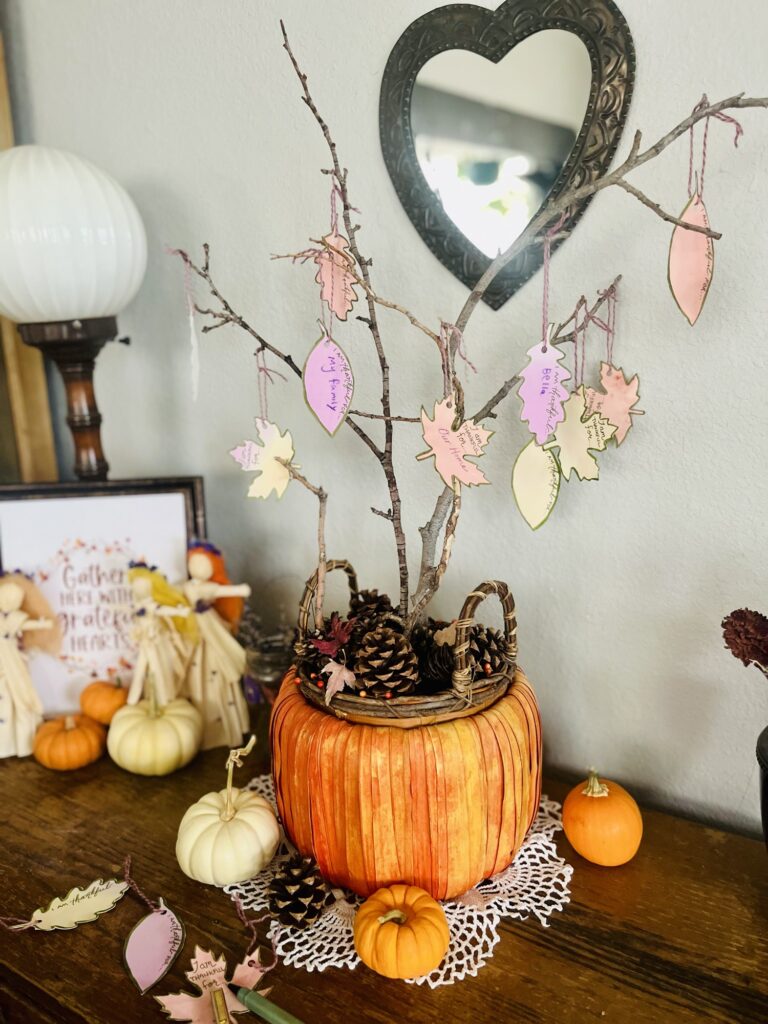
Thanksgiving is such a heartwarming time to pause, reflect, and appreciate the blessings in our lives.
One of my favorite ways to celebrate this beautiful season is by creating a Thanksgiving Gratitude Tree with my children.
It’s a simple, meaningful activity that brings the whole family together in a spirit of thankfulness.
In this guide, I’ll walk you through how to make your own gratitude tree using sticks bundled together in a garden pot, complete with colorful paper leaves for capturing the things you’re grateful for.
What You’ll Need:
• Sticks of various sizes
• A garden pot or sturdy container
• Twine or natural yarn
• Construction paper in fall colors, or have your children paint beautiful watercolor washes in fall colors on sturdy watercolor paper
• Scissors
• Hole punch
• Markers, pens, or our favorite colored pencils
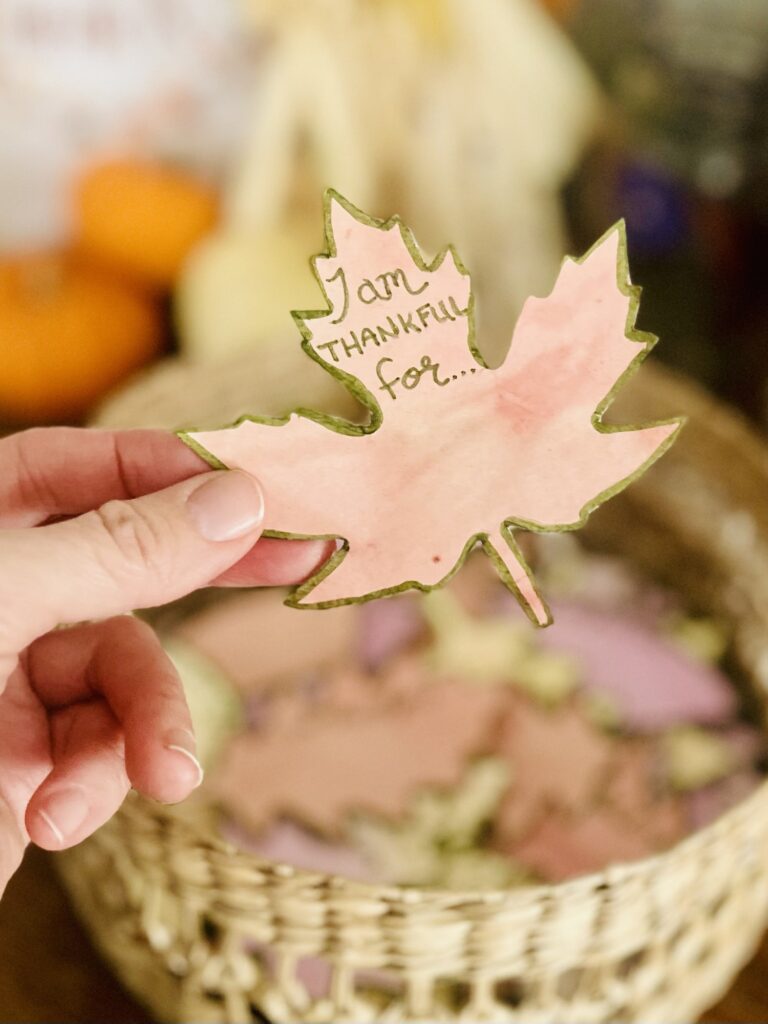
Step 1: Gather Your Sticks
Bundle up and head outside with your children to collect sticks. Let them explore and choose their favorite ones—tall, short, or twisty. This is a lovely way to connect with nature and set the tone for gratitude as you marvel at the beauty of the outdoors together.
Step 2: Bundle the Sticks
Once you’ve gathered your sticks, arrange them into a bundle. Use twine or string to tie them together at the base, forming a stable “tree.” Let your children help; it doesn’t need to be perfect—it’s the love and creativity that count.
Step 3: Place in a Garden Pot
Nestle your stick bundle into a garden pot or sturdy container. Add some stones, pebbles, or even dried beans at the base to keep it steady. This step is easy enough for little hands to help with, and they’ll love feeling involved.
Step 4: Make Your Fall Leaves
Here’s where the fun and creativity really begin! Use construction paper in warm autumn shades—think red, orange, yellow, and brown—and cut out leaf shapes. You can trace real leaves for inspiration or do a quick google search for free printable autumn leaf template, or even let the kids design their own! These paper leaves will hold your gratitude notes and bring your tree to life.
Step 5: Write What You’re Thankful For
Sit down as a family and take turns sharing what you’re grateful for. It might be as big as “my family” or as small and sweet as “hot cocoa on chilly mornings.” Write each sentiment on a paper leaf. Listening to what your children are thankful for is a heartwarming reminder of how precious their perspective is.
Step 6: Hang the Leaves on the Tree
Once your leaves are filled with gratitude, use a hole punch to make a hole in your leaves and thread a piece of twine or yarn through it. Tie each one to a branch using twine or yarn.
As your tree fills up, it becomes a vibrant display of love, joy, and thankfulness.
Step 7: Reflect and Celebrate
Throughout the Thanksgiving season, take moments to revisit your tree. Read the notes aloud, add new leaves, or simply reflect on the blessings it represents. It’s a beautiful reminder of how much there is to be grateful for, especially when shared with loved ones.
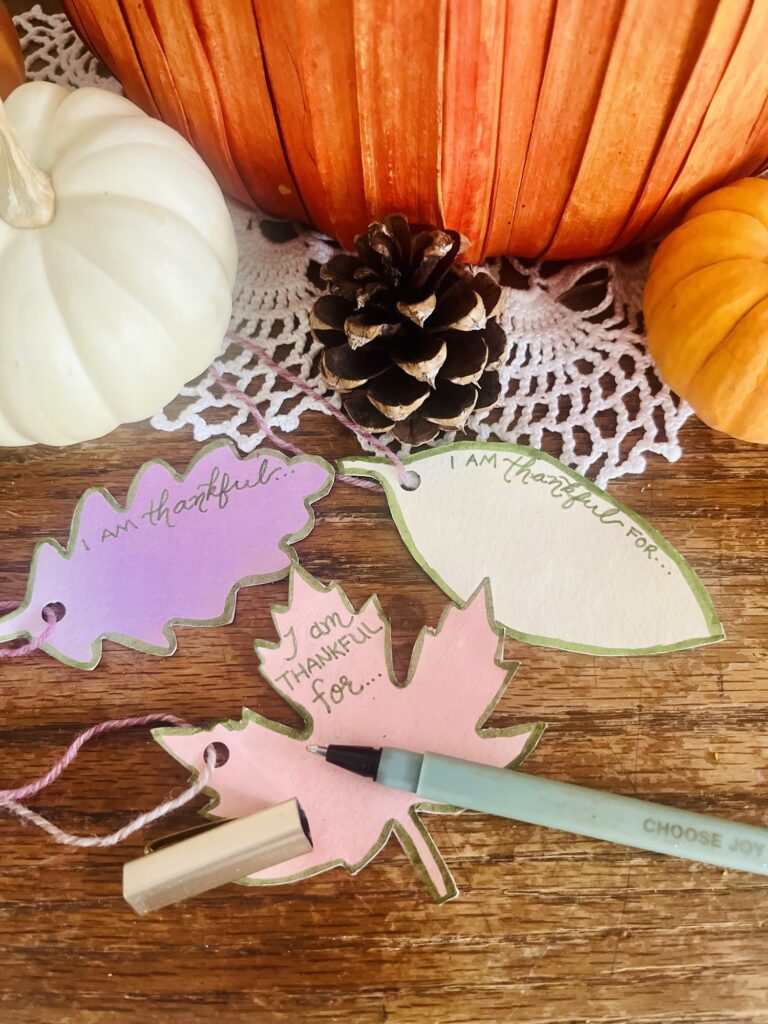
Creating a Thanksgiving Gratitude Tree is more than just a craft; it’s a chance to slow down, connect with your family, and focus on the joy in your lives. The finished tree is a meaningful centerpiece for your home, filled with memories and love.
I hope this project brings your family as much warmth and connection as it brings mine.
Wishing you a Thanksgiving filled with gratitude, laughter, and all the little moments that make life sweet.
From my home to yours, wishing you a Thanksgiving filled with love, gratitude, and connection.
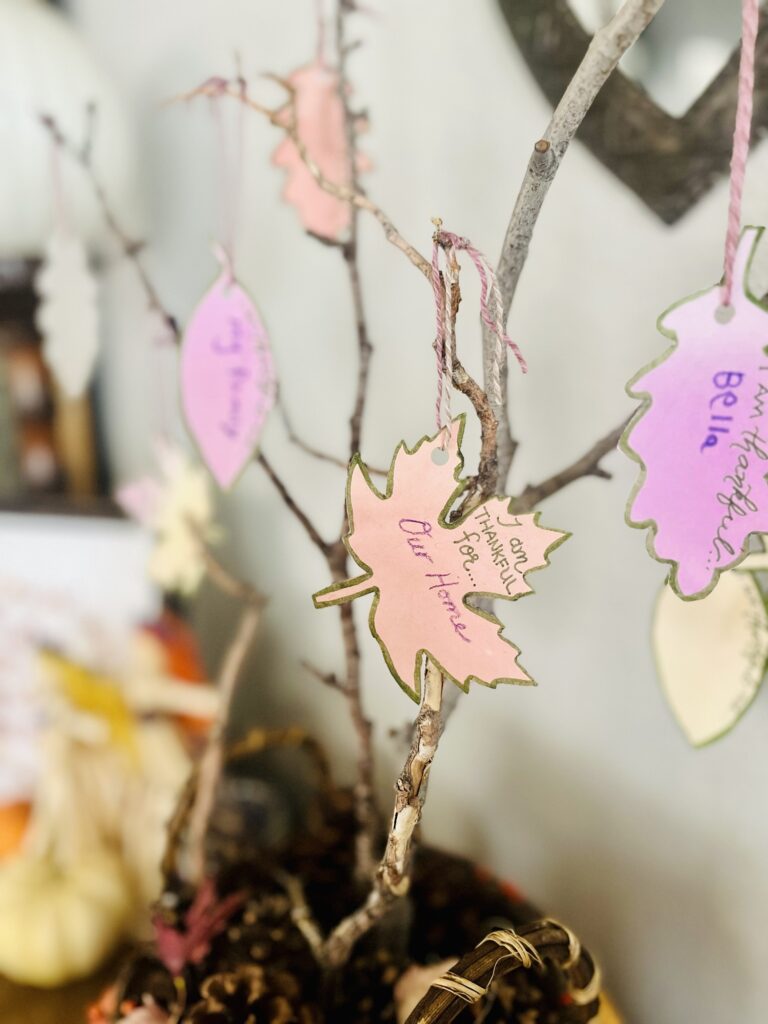

One thought on “Nourishing Thankful Hearts: A Guide to Gratitude + Crafting a Family ‘Gratitude Tree’”